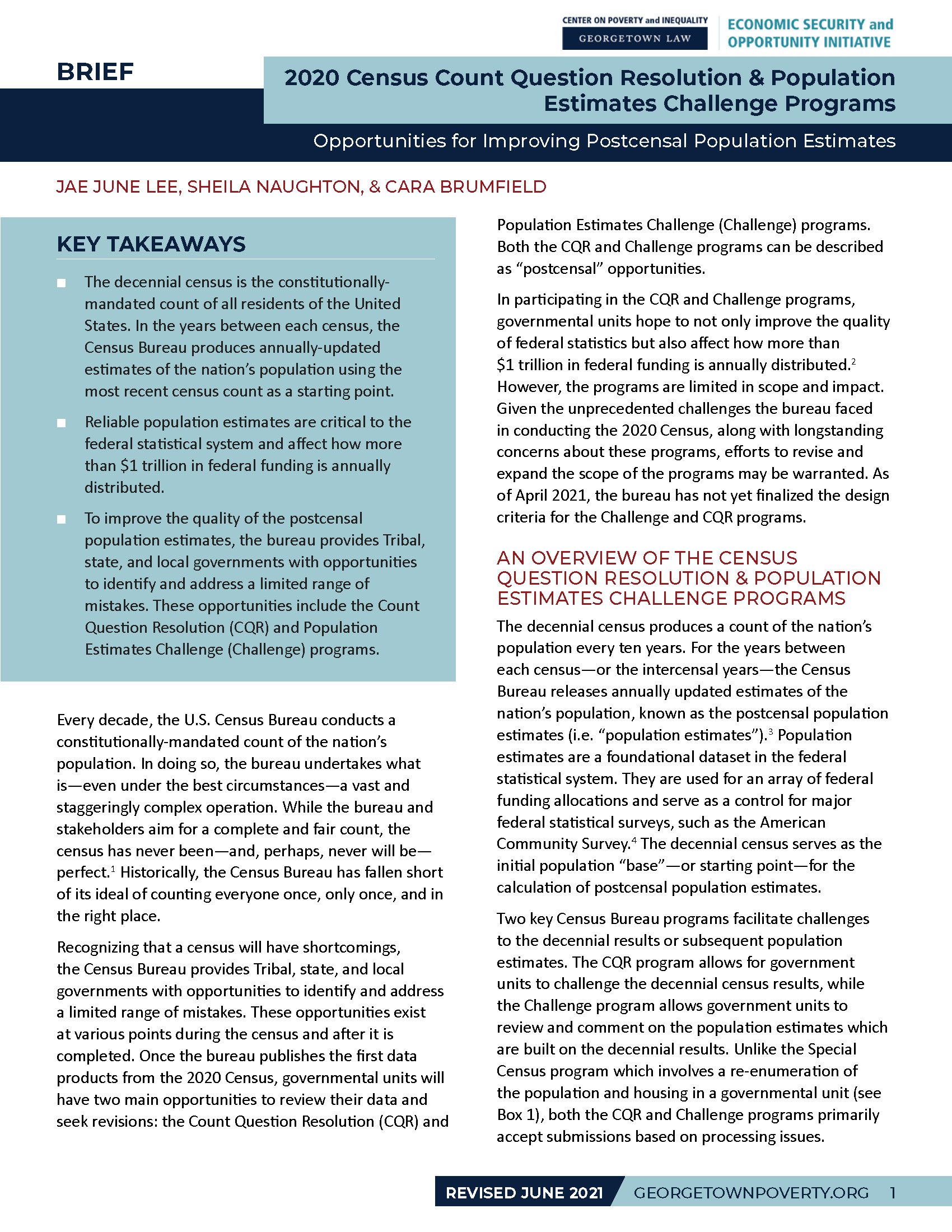Census data are essential to equitable distribution of political power and federal resources for programs that support economic security, health, education, and more. In the years between each census, the Census Bureau produces annually-updated estimates of the nation’s population using the most recent census count as a starting point. To improve the quality of these updated population estimates, the bureau provides Tribal, state, and local governments with opportunities to identify and address a limited range of mistakes. These opportunities include the Count Question Resolution (CQR) and Population Estimates Challenge (Challenge) programs. This brief provides a clear description of these programs (and their limitations) to help stakeholders understand and engage in these opportunities to pursue more accurate population estimates.
Key Takeaways
- The decennial census is the constitutionally-mandated count of all residents of the United States. In the years between each census, the Census Bureau produces annually-updated estimates of the nation’s population using the most recent census count as a starting point.
- Reliable population estimates are critical to the federal statistical system and affect how more than $1 trillion in federal funding is annually distributed.
- To improve the quality of the postcensal population estimates, the bureau provides Tribal, state, and local governments with opportunities to identify and address a limited range of mistakes. These opportunities include the Count Question Resolution (CQR) and Population Estimates Challenge (Challenge) programs.
Revised June 2021

